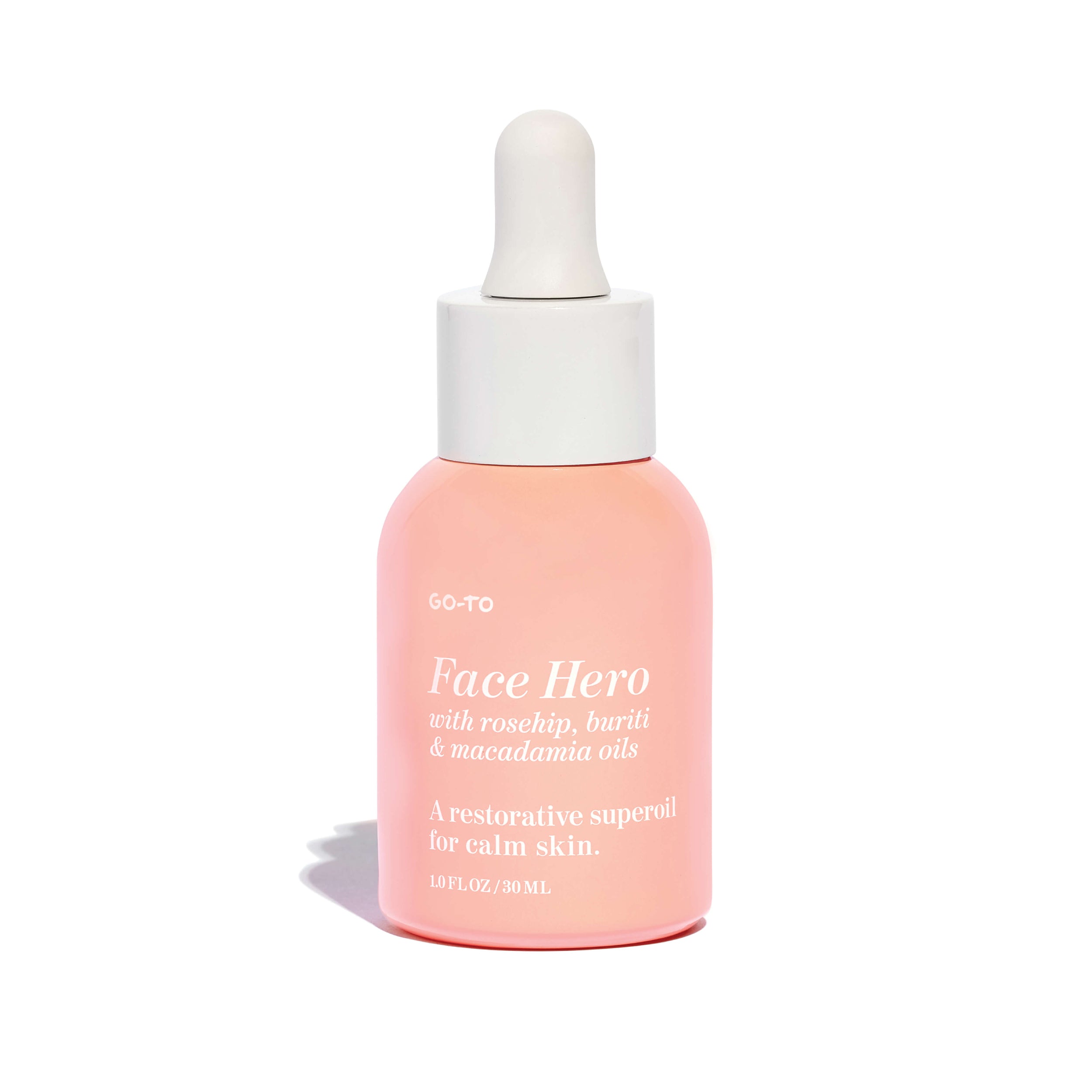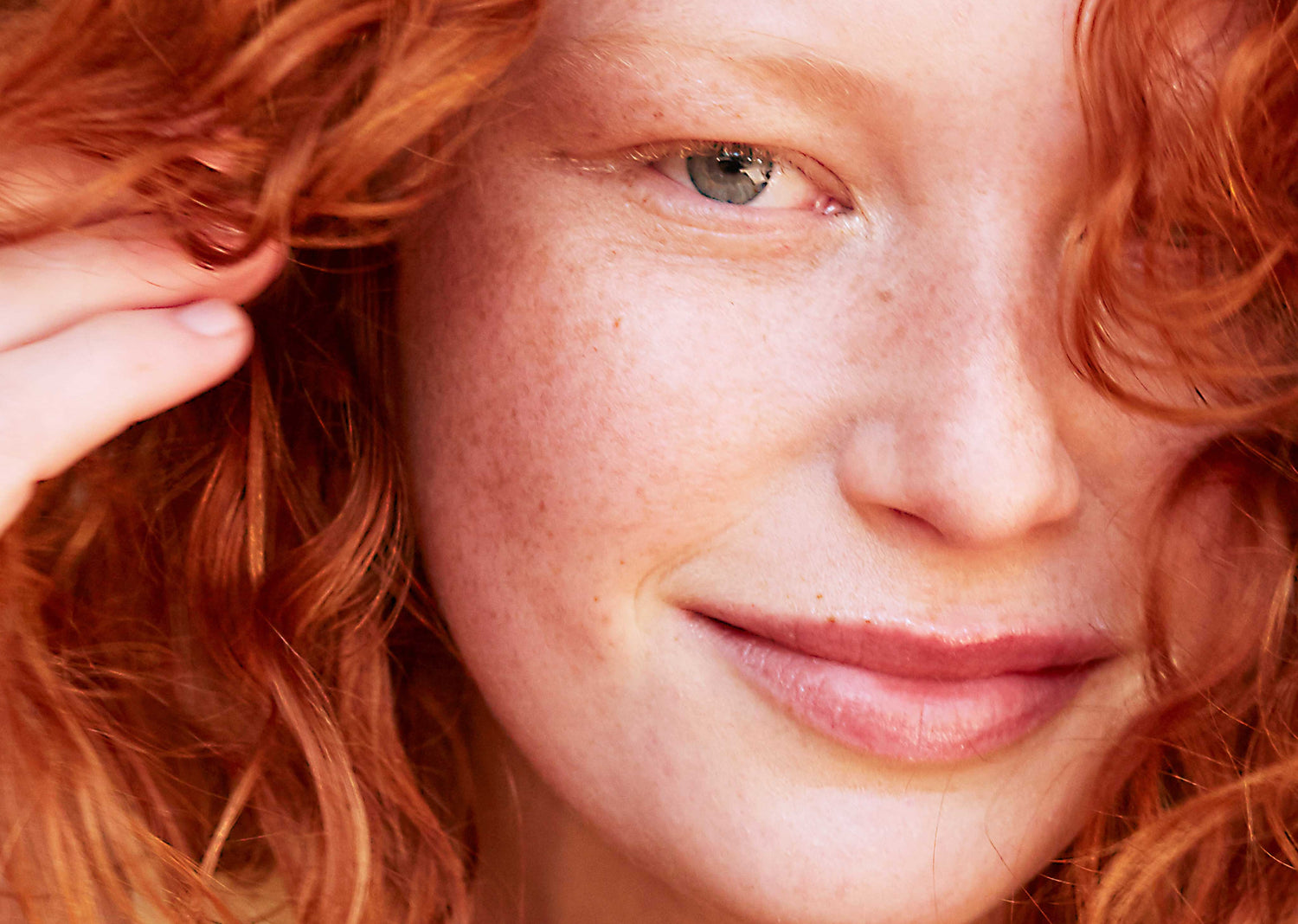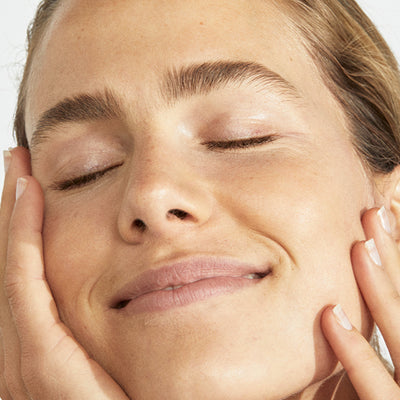Understanding your skin type is one of the most beneficial things you can do for your skin. (Buying it a superyacht is a close second.)
Because if you don’t know your skin type, then how can you know what your skin needs? And pick products that will actually work? And how will you know if your star signs are compatible? Impossible! You can’t! So, let’s fix that, and figure out once and for all if your skin is oily, dry, sensitive, combination, or normal.
Let’s go!
If your skin is losing its elasticity, showing more fine lines and wrinkles - you’re probably ageing. (Which is nothing to be afraid of!)
Fine lines, crows feet, and wrinkles are the most evident signs of ageing for both women and men. As collagen fibres begin to deplete, our skin loses its tight and plump look. The glowiness starts to fade too, with moisture levels in the top layer of skin taking a hit. Young skin renews itself every 3-4 weeks, but older skin is a little slower off the mark, taking 5-6 weeks to turnover.
While genetics plays a very big part in when your skin starts ageing and how exactly this manifests, sun exposure, lack of sleep, and stress play a role too.
What should you do to help it?
- Incorporate a really rich moisturiser into your routine, to both soothe and prevent dry skin. Keep an eye on ingredients like hyaluronic acid which are going to hold in moisture for maximum hydration.
- Shield your skin daily from damaging UVA and UVB protection. Sun exposure exacerbates the appearance of fine lines and wrinkles, so lathering on an SPF50 is going to help slow the signs of ageing.
If your skin is shiny, prone to blemishes and congestion, and generally features large, coarse pores - you’re probably oily.
Oily skin comes about because the skin overproduces sebum (the "oil" that causes blackheads, congestion, blemishes, etc) due to its oil content being out of whack. The body then tries to fix this by producing even more sebum to compensate. A vicious cycle indeed.
It can be triggered by hormones, stress, diet, weather (humidity!), and is quite often genetic – tis the skin you have been dealt. Cosmetics and the wrong skincare (harsh/astringent) can also trap oil and exacerbate oily skin.
What should you do to help it?
- The MO for oily skin should be to remove excess oil without stripping the skin (a gentle mousse cleanser is ideal for this, even better if it contains salicylic acid or willow bark extract to fight off congestion), and provide thorough nourishment without clogging pores.
Facial Cleanser A mousse facial cleanser that cleans. Properly! Properly Clean keeps your skin thoroughly clean but never dry or unbalanced.Properly Clean

If your skin feels tight, dry, or even rough, and you have no oily spots - you’re probably dry.
Dry skin lacks oil (not water, that’s dehydrated skin which is a skin condition, not a skin type) and it is very common. Because your skin is slacking off with oil production, it also tends to produce lines and creases far more quickly than oily skin. (Dammit.)
Ageing, hormones, and genetics are all contributors to dry skin, as well as some external triggers.
What should you do to help it?
- Incorporate oil-rich skincare into your routine to make up for what your skin’s not naturally producing.
- Avoid skincare and cosmetics made with sulfates which are known to be stripping, and will likely worsen your dry skin. Ick.
- Regularly exfoliate to clear away those dry, flaky skin cells.
If your skin is prone to rashes, inflammation, and redness - you’re probably sensitive.
Sensitive skin tends to be pretty reactive. So environmental factors (temperature, wind, sun), and some skincare, and makeup can easily piss off your skin. It’s also known to be thinner and feature cute little red patches especially around the nose, cheeks, chin, and neck.
What should you do to help it?
- Where possible, opt for specialised skincare (super gentle, irritant-free formulas), and makeup (mineral is best-in-class for sensitive skin).
- Always ALWAYS patch test new prods before welcoming them into your skincare team.
If you’ve got both oily and dry spots on your face - you’re probably combination.
Shine AND dry patches? At the same time? Congrats, cutehead, you’ve got combination skin. Combo skin exists on a spectrum, so depending on whether you veer more oily or dry, you might get an oily T-Zone at 5pm, or find your fine lines become more pronounced throughout the day, respectively.
What should you do to help it?
- Use face oil to replenish dry spots and regulate excess oil production at the same time.
- Multi-masking was made for combo cats. We’d recommend a clay mask on the T-Zone, a hydrating mask on the cheeks, and an Aperol spritz in both hands.
Clay Mask A luscious clarifying clay mask that replenishes while it detoxifies so you for clear, radiant, bouncy skin, without any gross, dry, tight afterfeel. The Removalist

If your skin is supple, smooth, plump, with small-medium pores, and a healthy colour - you’re probably normal.
The goldilocks of skin, and actually not all that normal; normal skin is the most rare and the least problematic of all the skin types. (Lucky!) Your skin is well-balanced, so it’s neither too oily or too dry, and is most likely to be in (relatively) good shape. In other words, things are pretty rosy for you.
What should you do to help it?
- Because you’ve got the least troublesome skin type, finding the right routine will be easier for you. Focus on the four core products: a good SPF, an effective cleanser, a chemical exfoliant, and something to nourish, and try not to brag too much about your easy-going skin.
















Comments